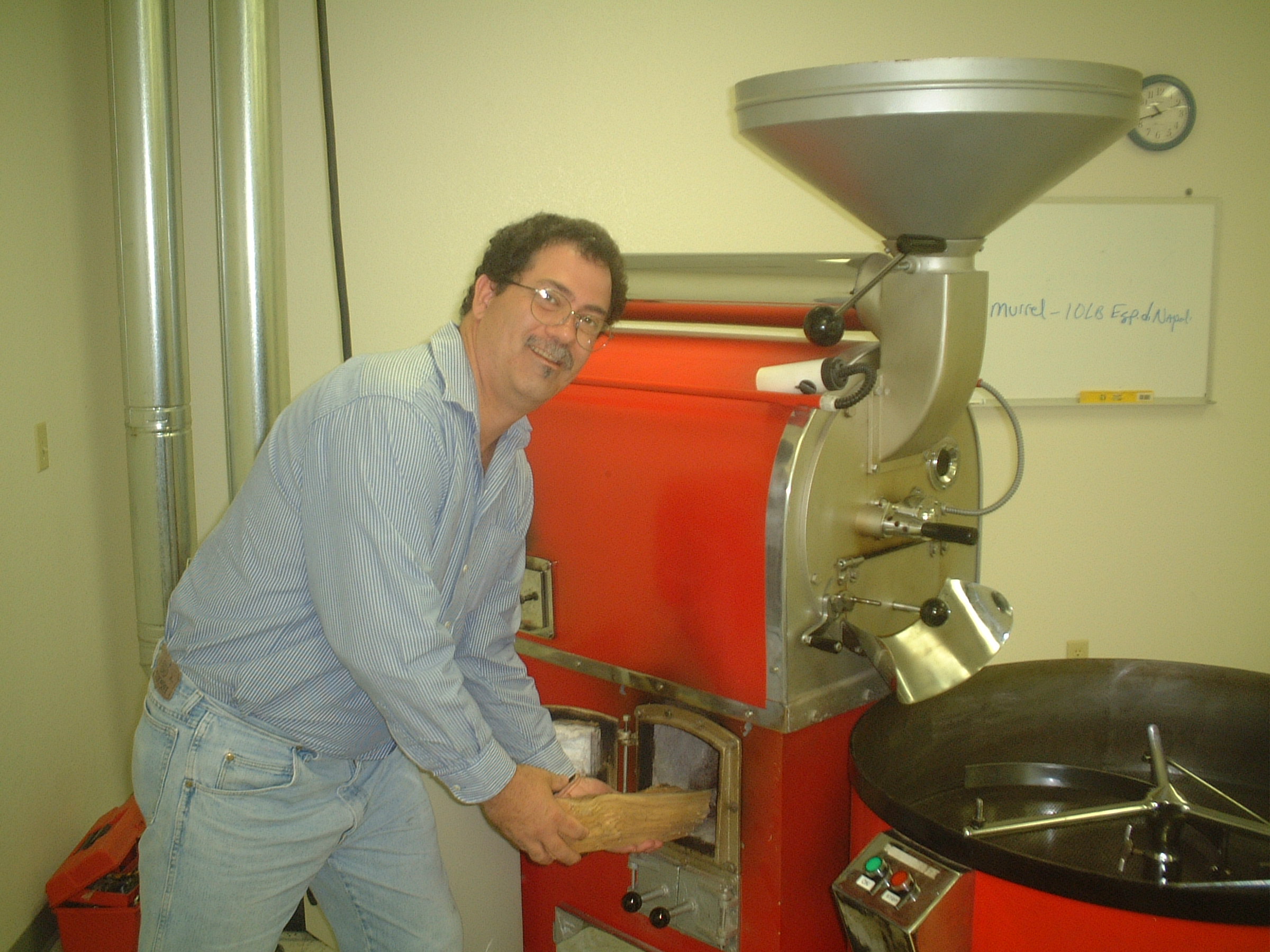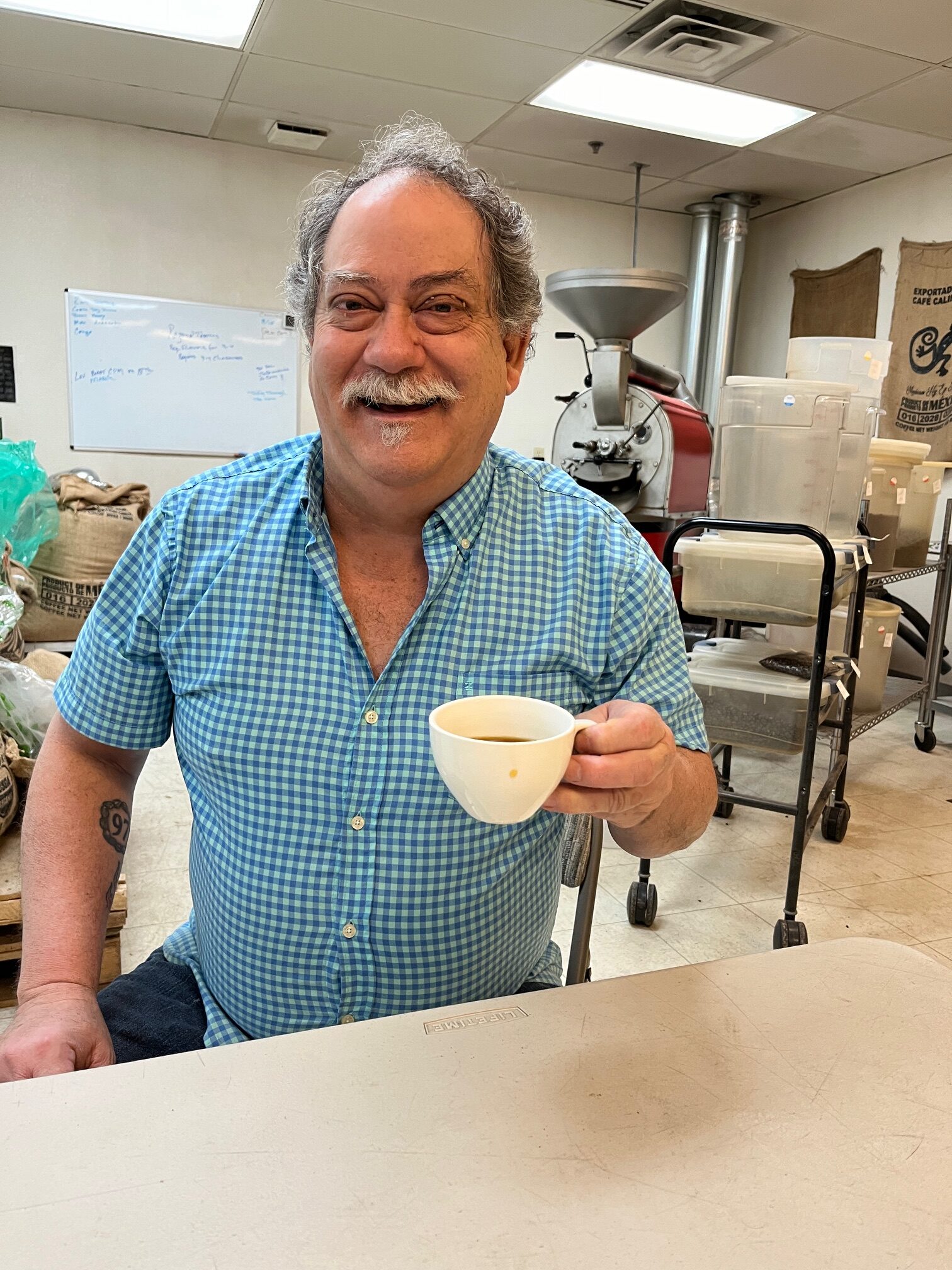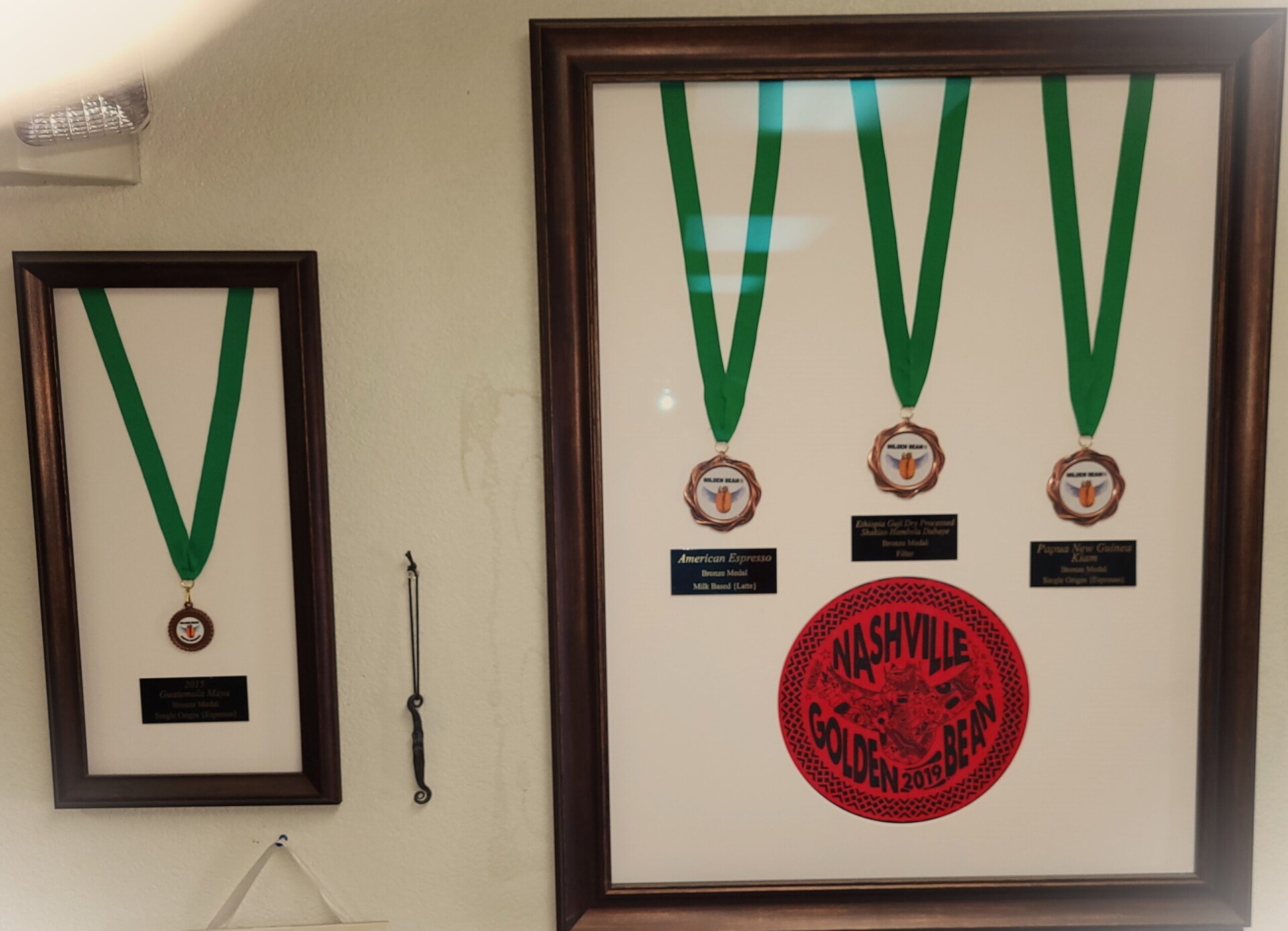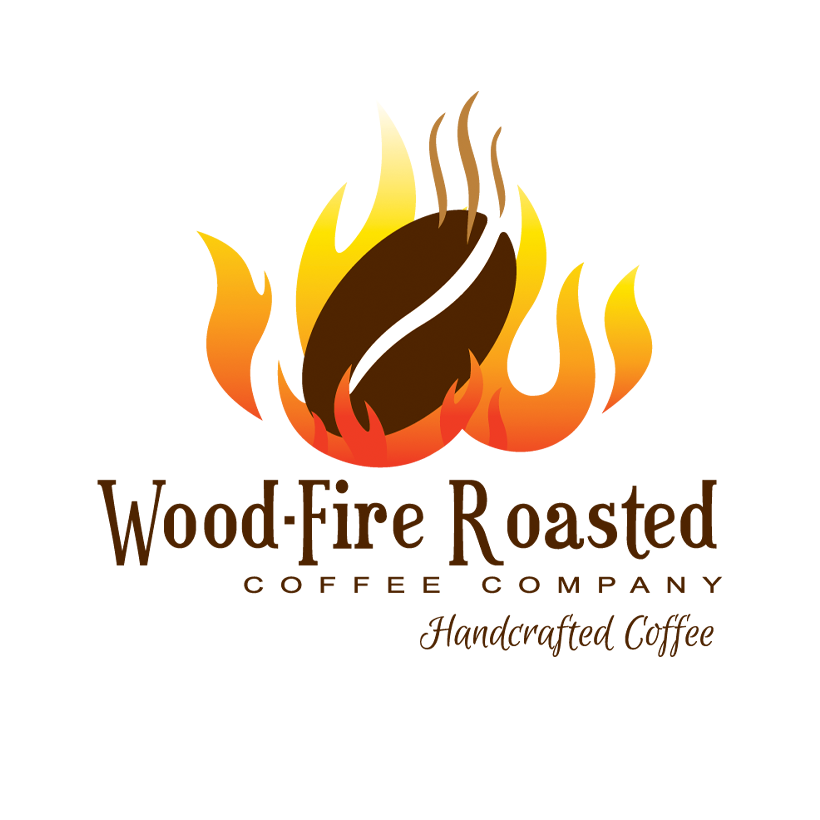By Natasha Bourlin, Passport and Plume
 Over the past 23 years, Owner/Roaster of Wood-Fire Roasted Coffee Company Tim Curry has refined his roasting skills seeking coffee excellence. Of the 50 coffee-exporting countries worldwide, Tim has experimented with roasting coffees from 31, delving into the bean’s flavor profiles from each region…and even tasting green beans for a baseline.
Over the past 23 years, Owner/Roaster of Wood-Fire Roasted Coffee Company Tim Curry has refined his roasting skills seeking coffee excellence. Of the 50 coffee-exporting countries worldwide, Tim has experimented with roasting coffees from 31, delving into the bean’s flavor profiles from each region…and even tasting green beans for a baseline.
“I create coffee beans,” he explains. Some have called him a coffee whisperer as he’s fine-tuned his ears to the frequency of roasting beans, listening for that first crack as they bask over his old-world roaster’s wood fire.
This indicates the moisture has evaporated from the beans, causing them to enlarge and the delectable flavor profiles to begin emerging. As this “first crack” process ends the beans are nearly ready.
Each bean has its own roast profile. Sometimes “second crack,” is the marker. Tim’s at the ready to drop the beans from the roaster, helping them further achieve their finest flavor potential.
Tim prefers the term “coffee scholar” to “whisperer”, however, he’s practically a Ph.D. by way of decades of experimentation with the way he roasts, the High Sierra altitude’s influence, and the way he’s learned to mesh both the art and the science of roasting coffee to produce exceptional products.
Scientific Artistry
“It’s all about the coffee,” Tim asserts.
He works diligently within the parameters of science yet uses his refined artistry when seeking to reveal the finest expression of the bean given its origin. He’s learned where he can manipulate the science and get to the art.
Science takes coffee from green beans to something roasted and flavorful, with basic rules to follow such as increasing temperature over time. Using all of his senses beyond science is where the art comes in.
As with every artist, Tim has developed a system that leads him to success in roasting. Artistry for Tim is manipulating the scientific system to achieve specific goals based on one’s knowledge of the coffee. For example, changing the time and temperature slightly, or listening to the beans crack.
One-of-a-Kind Wood-Fire Roasted Coffee
Many other coffee companies roast all beans the same way nearly every time. Yet there’s not a singular way to roast beans. Doing so often results in underdeveloped beans that remain green on the inside, producing coffee with a grassy, hay-like taste, or, on the other end of the spectrum, over-roasted, burnt, and bitter coffee that worsens as it cools.
Part of what makes WFRC’s coffees exceptional and diverse is Tim’s ongoing education on his favorite subject matter, his mission to find the best expression of each bean and his familiarity with the coffee region and the bean’s flavor profiles.
Self-taught, once he learned to roast, Tim then needed to learn to blend different coffees that complement each other.
Some of Wood-Fire Roasted’s awards
 Sometimes he dabbles in traditional blends with rules to craft it such as Mokha Java. While traditional blends have guidelines for blending, no rules around the roasting exist, so Tim consistently creates his own flavorful interpretation of tradition.
Sometimes he dabbles in traditional blends with rules to craft it such as Mokha Java. While traditional blends have guidelines for blending, no rules around the roasting exist, so Tim consistently creates his own flavorful interpretation of tradition.
But when Tim thinks two coffees will marry well, he experiments with proportions and some of his most popular coffees are born, like Cowboy Roast. His first-ever blend evoked an exclamation of “that’s it!” when tasted, and to date remains his bestselling coffee.
Others like his Truckee River Espresso, a light and bright espresso, Tim worked on for three years, off and on, until achieving satisfaction.
Of all the diverse flavor profiles, regions, and one-of-a-kind coffees Tim has crafted over his 23 years in the business, some consistencies remain: His pursuit of perfection is tireless, his education of his craft endless, and his desire to bring superior, delicious coffees to his customers wakes him daily.
